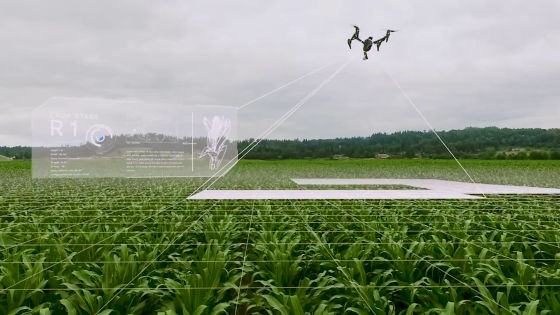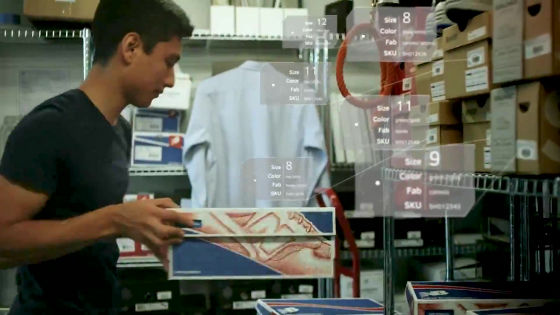Under development of AI chip "Loihi" that Intel can autonomously learn by chips independent of the cloud

In order to further advance the AI technology, development competition of AI chip dedicated to chip AI processing can be done in the chip by reducing reliance on the cloud is starting to be done. Huawei's "Kirin 970"And Apple's"A11 Bionic"AI built-in SoC for mobile terminals has been announced, but semiconductor maker Male Intel also announced the Neuromorphic system" Neuromorphic "which imitates the human brain mechanism"Neuromorphic Computing"AI chip · codename that realizes it"Loihi"We are developing.
Intel's New Self-Learning Chip Promises to Accelerate Artificial Intelligence | Intel Newsroom
https://newsroom.intel.com/editorials/intels-new-self-learning-chip-promises-accelerate-artificial-intelligence/
The following movie explains what kind of technology Neuromorphic Computing is.
Neuromorphic Computing: The Future of AI and Computing - YouTube
What is the future of AI?

In order to realize high performance AI, it is indispensable to develop semiconductor chips dedicated to AI.

AI technology should evolve more and more in a way that inspires human brain structure.

The technology expected to be realized by AI is diverse. For example, "automatic driving car" with advanced perimeter recognition capability

Just direct your smartphone to your baby ......

"Health care system" which can grasp health condition in one shot

"Drone for agriculture" which can check the growing condition of crops precisely by area

"AR technology" to advise where to move the box.

Intel has named "Neuromorphic Computing" AI semiconductor technology applying the structure of the human brain.

Neural networks in the brain transmit information by electric signals.

"Spikes" that occur between neurons stretched like a mesh eye can preserve their changes locally by adjusting synapse intensity and "weight". In other words, human intelligence is born by the neural circuit of the brain and its interaction.

With the development of semiconductors that can "self-learn" like the human brain, AI technology should advance further.

For example, as face recognition technology progresses ...

From the people who go to town you can instantly find missing people and wanted burglars.

Robots will be able to help humans even on site such as manufacturing and emergency.

A smarter city should be realized.

Then, when will the future come? Intel 's answer is that it has already arrived.

Intel is developing Neuromorphic Computing which can self-learn with a single semiconductor chip.

Today, attempts to realize AI technology through deep learning are taking place all over the world. However, in deep learning which combines "training" and "reasoning", since it requires a large amount of known learning data, it is inevitable to cooperate with the cloud, and it is difficult to deal with unknown situations where there is no training data set There are drawbacks.
On the other hand, Intel's approach to Neuromorphic Computing is to develop a self-learning type semiconductor chip that completes with a single chip without using the cloud. I get feedback from various information of the surrounding environment and learn like a human brain.
Intel has been conducting research and development on Neuromorphic Computing for six years in cooperation not only with semiconductor experts but also with experts in physics, biology, etc. We already tested a chip (codenamed Loihi) for testing doing. According to Intel, Loihi with a digital circuit that works with a mechanism that imitates the structure of the brain can combine training and reasoning processes in the chip, so it adapts autonomously and in real time to the environment without waiting for update from the cloud It is said that performance can be improved.

The Loihi chip has the following features.
· A completely asynchronous neural circuit similar core mesh, each neuron can communicate with thousands of other neurons
· Each Neuromorphic core includes a programmable learning engine so that network parameters can be adjusted, and supports supervised / none · reinforced other learning paradigms.
· Manufactured with Intel's 14 nm process technology
· Composed of 130,000 neurons and 130 million synapses
· Development of algorithms to deal with problems including path planning, constraint satisfaction, sparse encoding, dictionary learning, dynamic pattern learning, etc.
In the prototype Loihi chip, the learning improvement rate of 1 million times higher than that of a typical conventional neural network is recorded, and furthermore, 1000 times as much as the computing required for a general training system It is said that energy efficiency is high. Intel says that Loihi's test chip will be offered to universities and research institutions in the first half of 2018 and information sharing of AI development will be done.
Related Posts:







